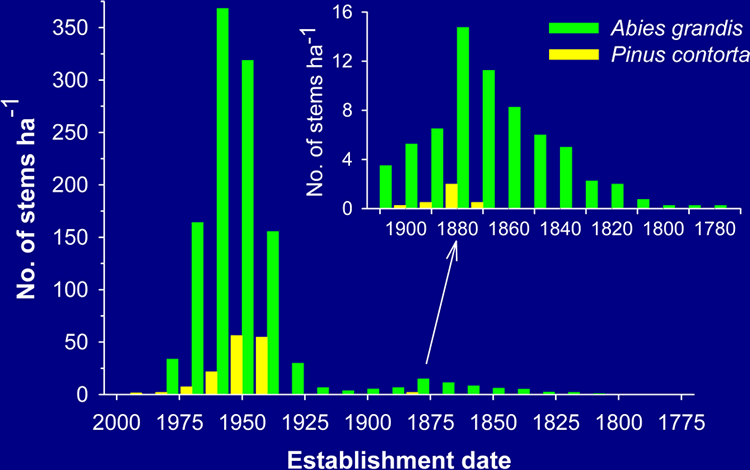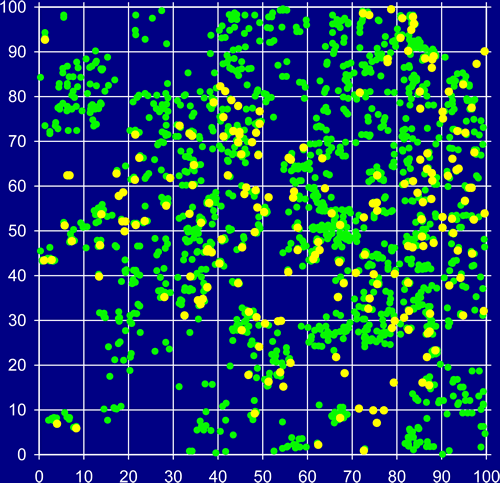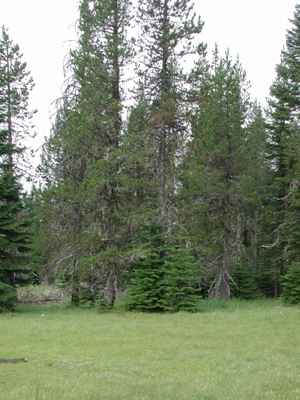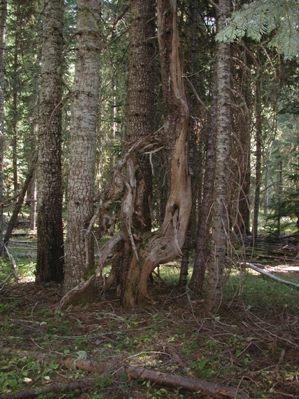Two
periods of tree establishment. Establishment
occurred during two broad intervals (mid- to late 1800s and mid-1900s),
separated by a period of limited recruitment (see composite age structure,
below). Recent establishment was not correlated with climatic variation.
Grand fir dominated both intervals. (photos,
below).
| Composite
age structure of trees |
 |
|
| Composite
age structure of trees in the four mapped plots. The initial
period of recruitment is enlarged for clarity. Many pine
that established in the original cohort still persist
as snags (see photo below, right), but are not present
in the live age structure. |
|
Tree
establishment was highly structured in space, but differed between
species.
Older pine were randomly distributed, but older grand fir were strongly
clumped. Younger stems of both species were positively associated
at small distances (both within and between species), but were displaced
from older grand fir. Young and old grand fir commonly established
in close proximity to young and old pine, respectively (see photos,
below)
Establishment
during the 1800s resulted in widely scattered pine and clumps of
grand fir, placing most areas of meadow close to seed sources, permitting
rapid invasion in the mid-1900s. Rapid conversion to forest occurred
via colonization of larger meadow openings—first by pine,
then by grand fir—and by infilling of smaller openings by
grand fir. (See
temporal sequence, right)
Conclusions
Spatial
and temporal patterns of establishment at Bunchgrass Ridge suggest
an invasion process strongly influenced by positive (facilitative)
interactions among trees, with early recruits modifying local environments
for subsequent establishment.
Once
invasion is initiated, tree species with different life histories
and functional traits can interact synergistically to promote rapid
conversion of meadow to forest—even when climatic conditions
are not optimal for tree establishment. This underscores the importance
of biological processes—in addition to factors such as climate
and fire—in the long-term dynamics of these systems. 
| Halpern,
C. B., J. A. Antos, J. M. Rice, R. D. Haugo, and N. L. Lang.
2010. Tree invasion of a montane meadow complex:
temporal trends, spatial patterns, and biotic interactions.
Journal of Vegetation Science 21:717-732. Request reprint |
|
| Sequence
of establishment in one mapped plot (100 x 100 m) |
| 1934 |
 |
| 1974 |
 |
| 2004 |
 |
| Trees
in the 1934 plot are the original cohort.
• grand
fir • lodgepole
pine |
|
|
|
![]()
![]()
![]()
![]()





